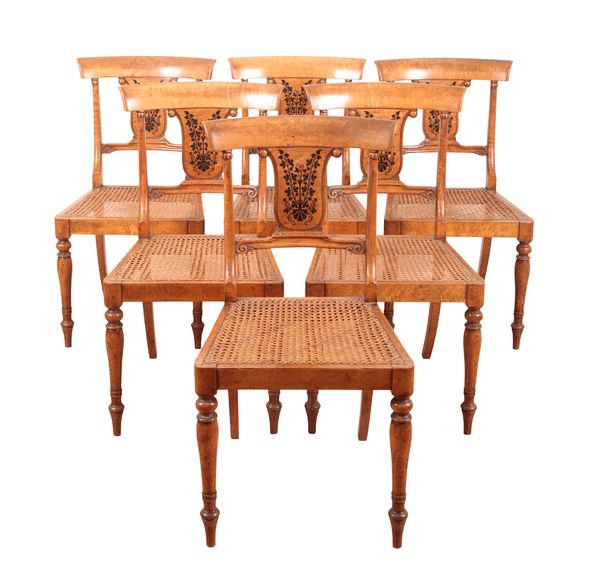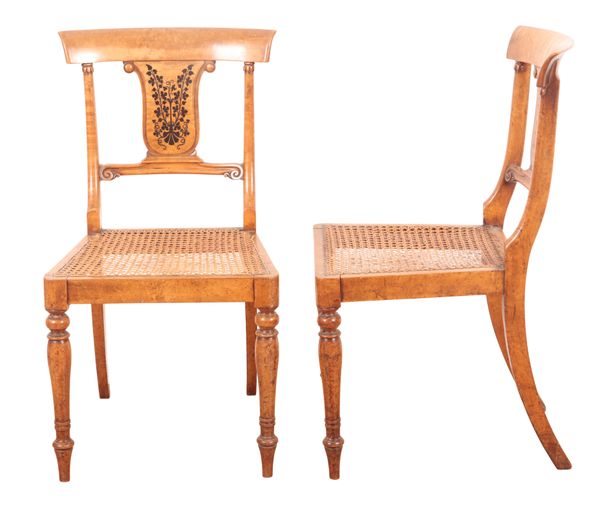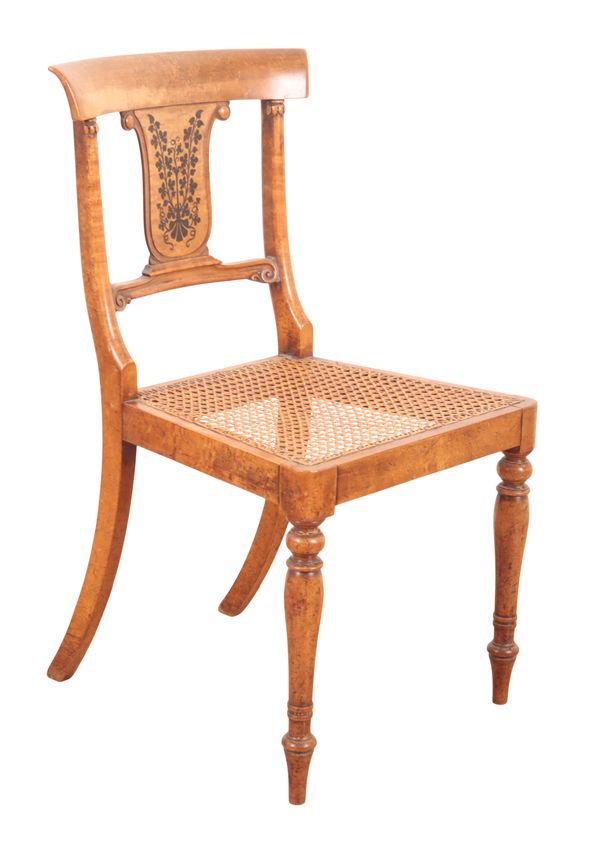the slender cresting rails with everted tops over vase shaped backs inlaid with a fine ebony floral design, the caned seats with five loose horse hair cushions on turned front legs and outswept rear legs, 83cm high x 45cm wide (6)
| Estimate: | £4,000 - £6,000 |
George Bullock (d. 1818) was one of the most innovative British furniture designers of the Regency period. He gained renown working on such projects as Longwood House, to furnish the new home of the exiled Emperor Napoleon, where he exhibited his capacity to produce fashionable works in the French taste to the highest degree of excellence.
Following the fall of Bonaparte and the accession of King George IV, Bullock is
also among the first and most highly rated cabinet makers to adopt a wholly
more British and modern style. The use of naturalistic leaf and flower ornament
as seen here contrasts the more formal and classical motifs of his early works.
The inlay is suggestive of the designs accessible in the Birmingham
Museums archives of 'Tracings by Thomas Wilkinson from the designs of the late
Mr George Bullock 1820’, which provides an excellent resource for comparison.
The flowing freedom of the work on these chairs can be seen in many of the
designs, including accession number 1974M3.237.
At this time Bullock also leads the market in advocating a greater use of
native woods, as again shown in this lot, which inspires Richard Brown to say
of Bullock 'He has shown that we need not roam to foreign climes for beautiful
ornaments'. The popularity of this thought and style is clearly shown in the
Stock and Trade sale of Bullock's estate, where lots 96-134 were all occupied
by such native veneers. (Levy, 1988, pg.48).
Literature: Levy, Martin, The Sale of Bullock's Stock in
Trade, London, 1988.
Musgrave, Clifford, Regency Furniture 1800-1830, London,
1961.




